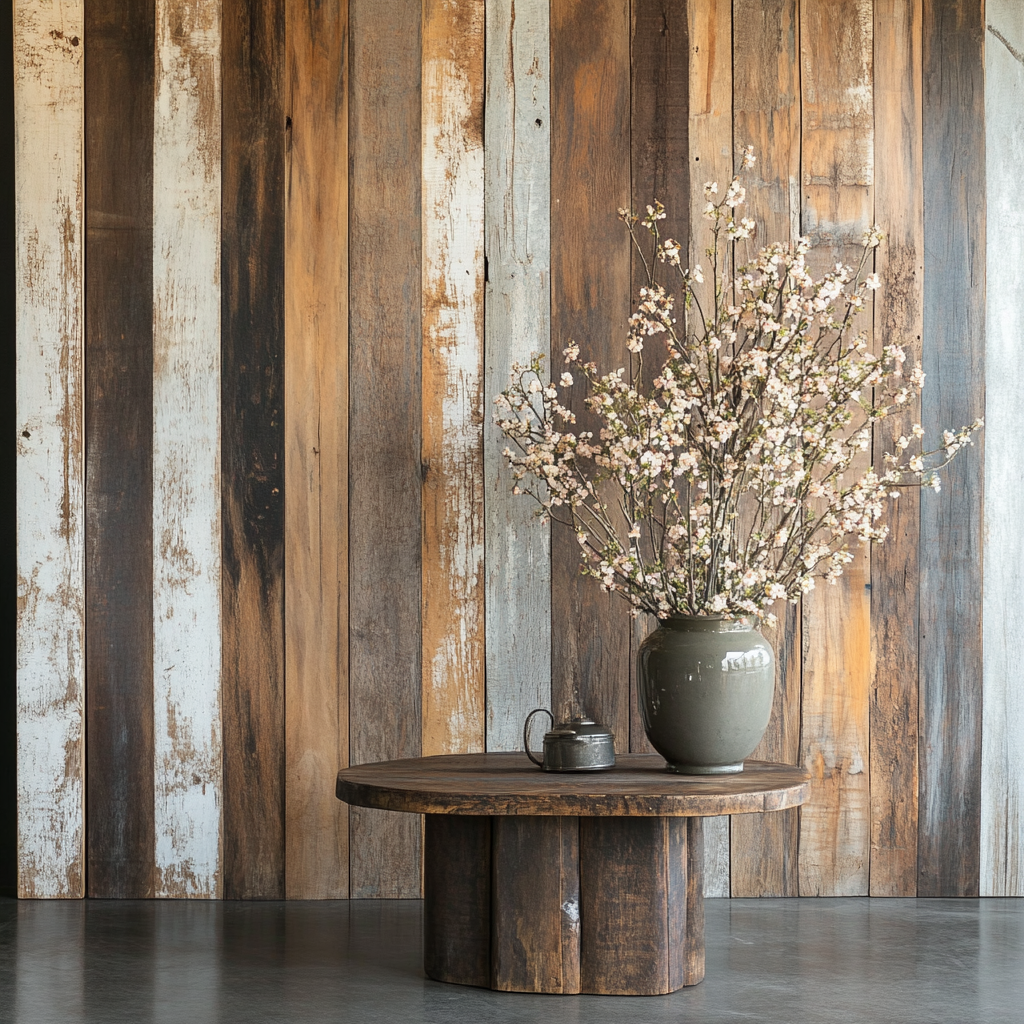Introduction
Reclaimed teak wood is a sustainable material sourced from old structures, furniture, and other wood products. This eco-friendly choice has gained popularity due to its durability and unique aesthetic appeal. In an era where environmental consciousness is crucial, reclaimed teak wood stands out as a responsible alternative to newly harvested timber.
Importance of Sustainability in 2024
The significance of sustainability cannot be overstated in 2024. The world faces pressing environmental challenges including deforestation, climate change, and habitat loss. Choosing eco-friendly products like reclaimed teak wood contributes positively to the environment by:
- Reducing Waste: Utilizing existing wood helps minimize landfill waste.
- Conserving Forests: Reclaimed teak alleviates the demand for new timber, aiding in forest preservation.
- Lowering Carbon Footprint: The production of reclaimed wood requires less energy compared to new lumber processing.
By opting for reclaimed teak wood, consumers not only invest in quality but also support sustainable practices that protect our planet. This choice aligns with the growing trend of prioritizing environmentally responsible products in home decor and construction.
As we move toward a more sustainable future, reclaiming resources becomes imperative. The beauty and functionality of reclaimed teak wood make it an attractive option for those who value both aesthetics and ecological responsibility. Embracing this material signifies a commitment to sustainability while enhancing living spaces with character and charm.
Why Choose Reclaimed Teak Wood?
Reclaimed teak wood is an excellent choice for environmentally conscious consumers. This material is known for its exceptional durability, making it a long-lasting option for furniture and decor.
1. Durability of Teak Wood
Reclaimed teak wood is known for its strength and natural resistance to water and pests. This resistance comes from the wood’s high oil content, which allows it to withstand harsh weather conditions without warping or cracking. As a result, reclaimed teak furniture remains intact over time, providing lasting value.
Moreover, the durability of reclaimed teak wood is not just anecdotal; it is supported by scientific research that highlights its long-term performance in various conditions here.
2. Environmental Impact
Choosing reclaimed teak wood has a positive impact on the environment. By opting for this sustainable option, consumers actively contribute to protecting natural forests. The process involves repurposing wood from old buildings instead of sourcing new timber from logged forests. This practice helps reduce deforestation, allowing ecosystems to thrive and lowering carbon footprints.
In addition to its durability and eco-friendly qualities, reclaimed teak wood has a unique aesthetic appeal that enhances any space. Each piece carries a rich history, adding character and charm to homes while promoting both style and sustainability.
Embracing reclaimed teak wood is a responsible choice for consumers in 2024. It satisfies the demand for long-lasting and beautiful products while supporting initiatives aimed at conserving our planet’s valuable resources.
Reclaimed Teak Wood vs New Teak Wood: A Comparison
The comparison between reclaimed teak wood and new plantation-grown teak reveals significant differences in strength and versatility. It’s also worth noting how reclaimed teak stacks up against other popular options like mango or oak wood, which you can explore further here.
Strength and Versatility
Reclaimed teak wood is sourced from old structures, giving it a unique character. Over time, it has developed a density that enhances its strength, often surpassing that of newly harvested teak. This makes reclaimed teak highly resistant to warping and cracking, ensuring longevity in furniture applications.
Janka Hardness Rating
Understanding durability can be assisted by the Janka Hardness rating. This scale measures the resistance of wood to denting and wear. Newly sourced teak typically scores around 1,155 on the Janka scale. In contrast, reclaimed teak often exceeds this rating due to its age and natural hardening processes. Higher hardness translates into superior durability for everyday use.
Kiln-Dried Wood Advantages
Utilizing kiln-dried reclaimed wood in furniture making presents various benefits:
- Stability: The drying process reduces moisture content, which minimizes the risk of warping or splitting.
- Sustainability: By choosing kiln-dried reclaimed wood, consumers support sustainable practices while benefiting from high-quality materials.
- Aesthetic Appeal: Kiln-drying enhances the natural grain patterns and colors of reclaimed teak, making it visually striking for any design style.
Selecting reclaimed teak wood not only contributes to environmental preservation but also ensures high-performance furniture that marries beauty with strength. For more insights into different types of wood for furniture, including their pros and cons, you can refer to this comprehensive guide on types of wood for furniture.
The Visual Appeal of Reclaimed Teak Wood in Furniture Design
Reclaimed teak wood is not just a sustainable choice; it also brings a unique aesthetic quality to furniture design. The visually striking coloration found in reclaimed teak varies dramatically, showcasing the rich history of each piece. This variety enhances its charm and versatility, making it suitable for numerous design styles.
Color Variations and Visual Appeal
- Natural Patina: Reclaimed teak often features a beautiful patina developed over years of exposure to the elements. This natural finish adds depth and character, making each piece one-of-a-kind.
- Rich Hues: From golden browns to dark chocolates, reclaimed teak embodies a spectrum of colors that can complement various interior palettes. Its warm tones create an inviting atmosphere in any space.
- Unique Grain Patterns: The grain patterns in reclaimed teak are distinctive, offering visual interest that is hard to replicate with new wood. This uniqueness allows designers and homeowners to create standout pieces that serve as conversation starters.
Incorporating Rustic Teak Elements into Modern Interiors
Rustic teak elements can seamlessly blend into contemporary design schemes, providing a striking contrast against sleek lines and minimalist decor:
- Mixing Textures: Pairing reclaimed teak furniture with modern materials such as glass or metal fosters an engaging visual dynamic. The warmth of the wood softens the coldness of metals or the clarity of glass.
- Statement Pieces: Utilizing large reclaimed teak items like dining tables or accent cabinets can anchor a room, providing a focal point that draws attention while maintaining a cozy ambiance.
- Eclectic Styles: Incorporating rustic teak into bohemian or eclectic interiors adds character and depth. These pieces harmonize beautifully with other vintage or artisanal elements.
Maintaining the Beauty of Reclaimed Teak Wood Furniture
To preserve the beauty and longevity of reclaimed teak furniture, proper maintenance practices are essential:
- Regular Dusting: Use a soft cloth to dust surfaces regularly, removing dirt and debris that can dull the finish.
- Cleaning with Care: For deeper cleaning, use a damp cloth with mild soap. Avoid harsh chemicals that could damage the wood’s natural oils.
- Avoid Direct Sunlight: Positioning furniture away from direct sunlight minimizes fading and discoloration over time.
Addressing Common Misconceptions about Teak Oil for Maintenance Purposes
A prevalent misconception involves using teak oil for maintaining reclaimed teak furniture. Here are important points to consider:
- Teak Oil Usage: While some believe that applying teak oil enhances appearance, excessive use can lead to buildup and negatively affect the wood’s natural luster.
- Natural Finish Preference: Many experts recommend leaving reclaimed teak untreated or using natural waxes instead. This approach preserves its organic look while protecting it from moisture and wear.
- Long-Term Care: Regular cleaning and occasional waxing provide adequate protection without compromising the inherent beauty of reclaimed teak.
The visual appeal of reclaimed teak wood in furniture design cannot be overstated. Its unique characteristics allow it to fit comfortably within various interior styles while also offering sustainable benefits. Proper maintenance ensures these stunning pieces remain beautiful over time, allowing homeowners to enjoy their aesthetic qualities for years to come.
For those looking to delve deeper into [the art of maintaining reclaimed wood](https://www.hoffparquet.co.uk
Make a Sustainable Choice with Reclaimed Teak Wood Furniture from CH Furnitures
Choosing reclaimed teak wood is a significant step towards sustainability in 2024. This option not only meets aesthetic desires but also addresses the urgent need for environmentally friendly practices. Here’s why:
- Environmental Impact: Choosing reclaimed teak helps reduce deforestation and preserves natural ecosystems.
- High-Quality Craftsmanship: CH Furnitures provides meticulously crafted reclaimed teak pieces that offer durability and style.
By selecting reclaimed teak, customers can enhance their spaces while making responsible choices.
For those interested in finding environmentally sustainable lumber options, CH Furnitures offers a diverse range of high-quality reclaimed teak decking and panel options. Each piece reflects a commitment to sustainability and craftsmanship.
Contact CH Furnitures today to explore how reclaimed teak wood can elevate your living environment while supporting eco-friendly practices.
FAQs (Frequently Asked Questions)
What is reclaimed teak wood?
Reclaimed teak wood refers to timber that has been salvaged from old buildings, boats, or other structures, allowing it to be reused in new products. This process not only preserves the natural resource but also contributes to sustainability efforts by reducing the demand for new lumber.
Why should I choose reclaimed teak wood over new teak wood?
Reclaimed teak wood offers exceptional durability and resistance to water and pests, making it a long-lasting choice. Additionally, opting for reclaimed teak helps in preserving natural forests by reducing the need for newly harvested timber.
How does reclaimed teak compare to new plantation-grown teak?
Reclaimed teak is often stronger and more versatile than new plantation-grown teak due to its age and natural drying process. It typically has a higher Janka Hardness rating, indicating superior durability, and using kiln-dried reclaimed wood enhances its suitability for furniture making.
What are the visual benefits of using reclaimed teak wood in furniture design?
Reclaimed teak wood is known for its visually striking coloration and unique grain patterns. It can incorporate rustic elements into modern interiors, providing a distinctive aesthetic that adds character to any space.
How can I maintain the beauty of my reclaimed teak wood furniture?
To maintain the longevity and beauty of reclaimed teak furniture, it is recommended to regularly clean it with a soft cloth and avoid harsh chemicals. While some believe in using teak oil for maintenance, there are common misconceptions about its necessity; many experts suggest that regular dusting is often sufficient.
Why should I consider purchasing reclaimed teak wood furniture from CH Furnitures?
Choosing reclaimed teak from CH Furnitures supports environmentally sustainable lumber options. In 2024, making a conscious choice towards sustainable products is more important than ever, and CH Furnitures offers high-quality reclaimed teak decking and panel options for your needs.











